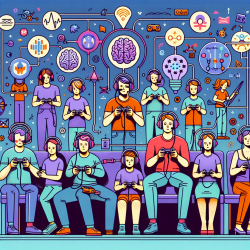Introduction
The COVID-19 pandemic has cast a spotlight on the stark health inequities faced by communities of color. A recent study titled COVID-19 shines a light on health inequities in communities of color: A youth-driven photovoice inquiry provides valuable insights into how youth perceive these inequities and suggests ways practitioners can address them. This blog aims to help practitioners enhance their skills by implementing these insights and encourages further research into data-driven methods like Photovoice.
Understanding Photovoice
Photovoice is a participatory visual ethnographic method that empowers participants to document and discuss their life conditions through photography. Developed by Wang and Burris (1994), this method is particularly effective in engaging marginalized communities, including youth, to reflect on their experiences and advocate for social change.
Key Findings from the Study
The study engaged youth of color in a Photovoice project to explore their perceptions of health during the COVID-19 pandemic. Four major themes emerged:
- Taking Health into Our Own Hands: Youth expressed a lack of trust in the healthcare system and a reliance on cultural remedies and self-management strategies.
- Toxic Productivity Culture: The pandemic exacerbated the pressure to maintain high productivity, impacting mental health and well-being.
- High Cost of Personal Health Resources: The financial burden of maintaining health was highlighted, with youth pointing out the inequitable access to resources.
- Inequitable Health Policies and Services: Youth identified systemic failures in health policies that disproportionately affect communities of color.
Implications for Practitioners
Practitioners can leverage these insights to improve their practice in several ways:
- Building Trust: Engage with youth and communities to rebuild trust in the healthcare system. This involves listening to their concerns and incorporating their feedback into healthcare practices.
- Promoting Cultural Competence: Recognize and respect cultural health practices and integrate them into care plans where appropriate.
- Advocating for Policy Change: Use the insights from youth to advocate for equitable health policies that address systemic barriers and improve access to care.
Encouraging Further Research
The study underscores the importance of participatory research methods like Photovoice in understanding and addressing health inequities. Practitioners are encouraged to conduct further research using these methods to gather more data and insights from marginalized communities. This approach not only democratizes knowledge production but also empowers communities to take action for social change.
Conclusion
By implementing the insights from this youth-driven study, practitioners can make data-driven decisions that lead to better health outcomes for children in marginalized communities. Embracing participatory research methods and advocating for systemic change are crucial steps in addressing the health inequities highlighted by the COVID-19 pandemic.
To read the original research paper, please follow this link: COVID-19 shines a light on health inequities in communities of color: A youth-driven photovoice inquiry.










